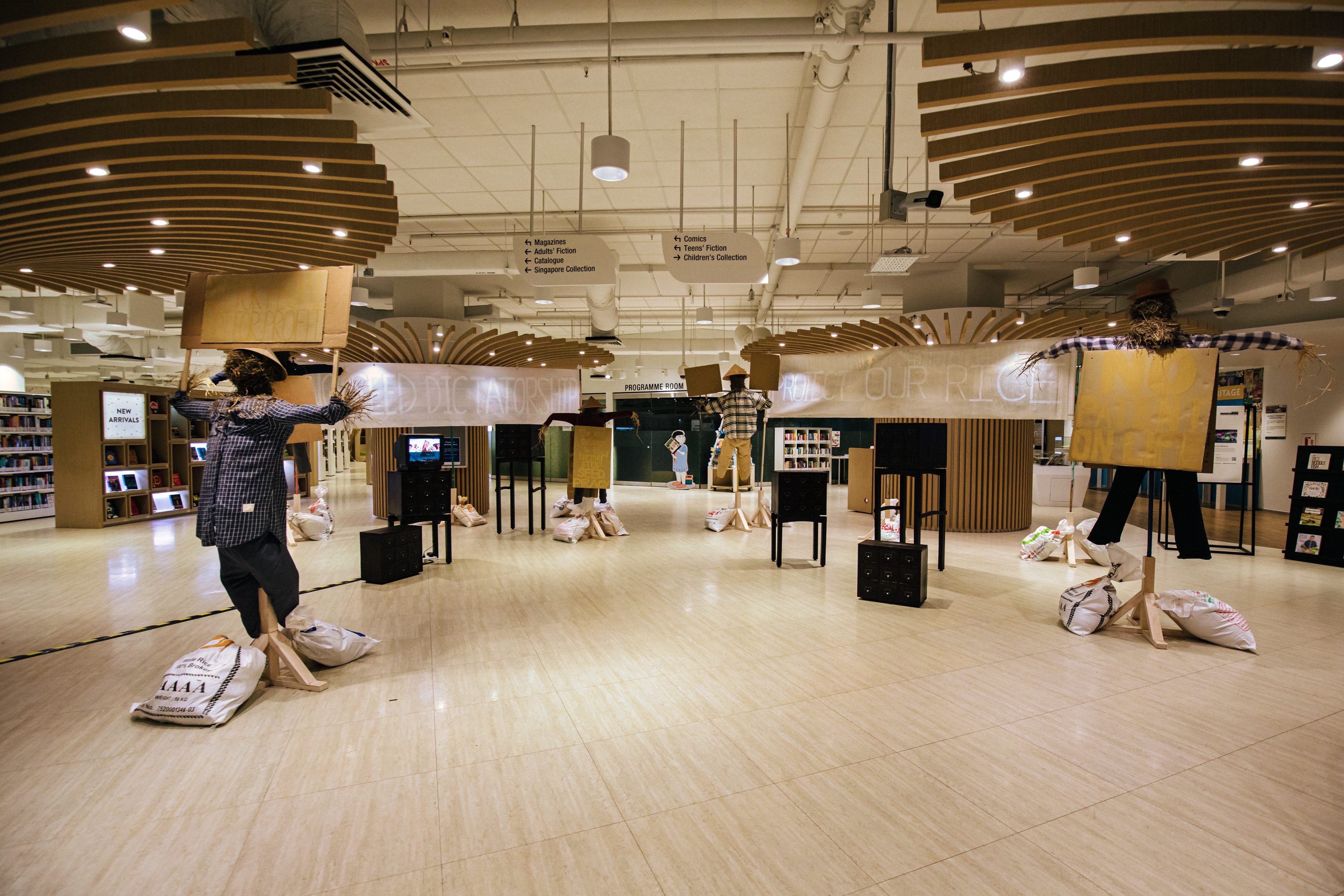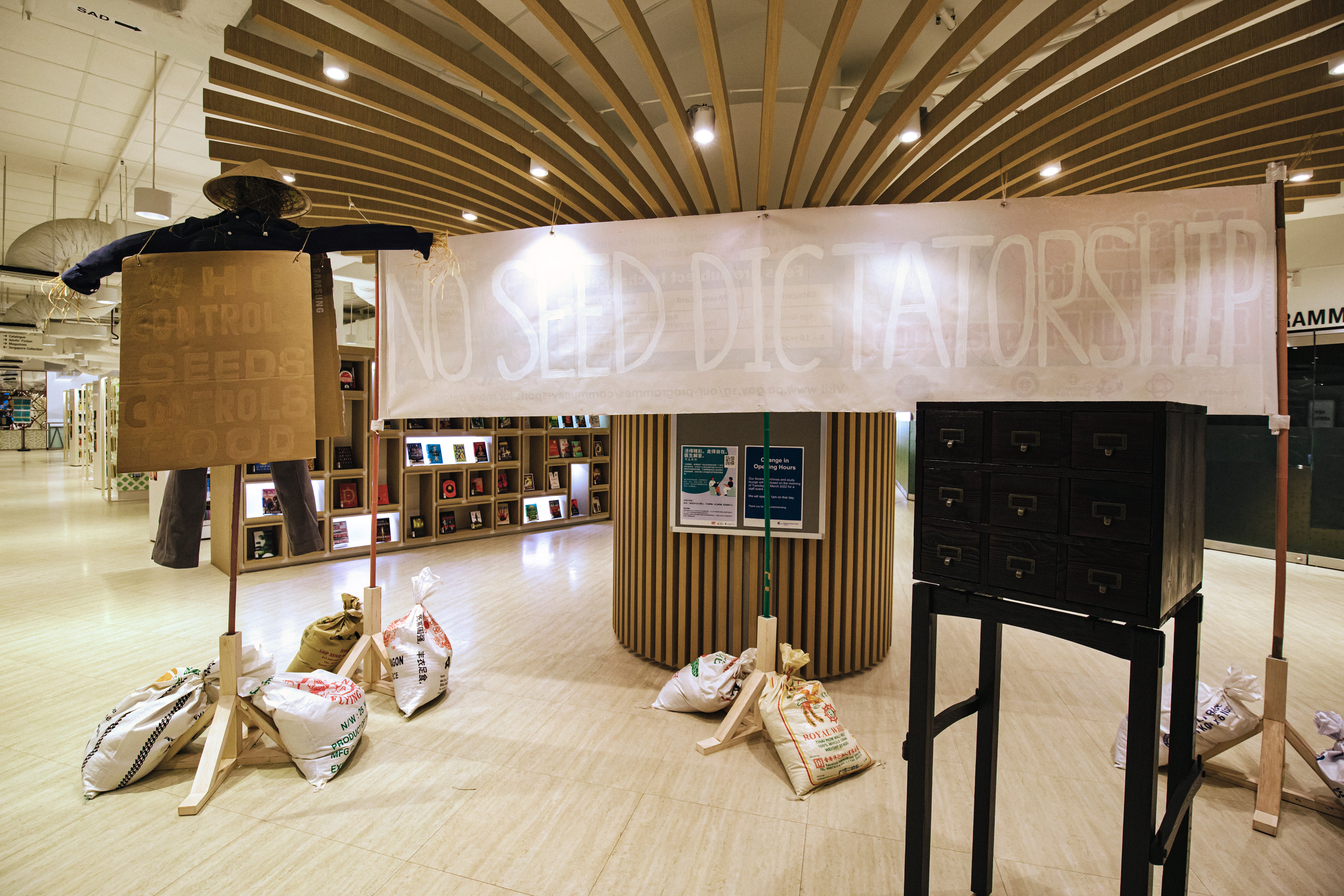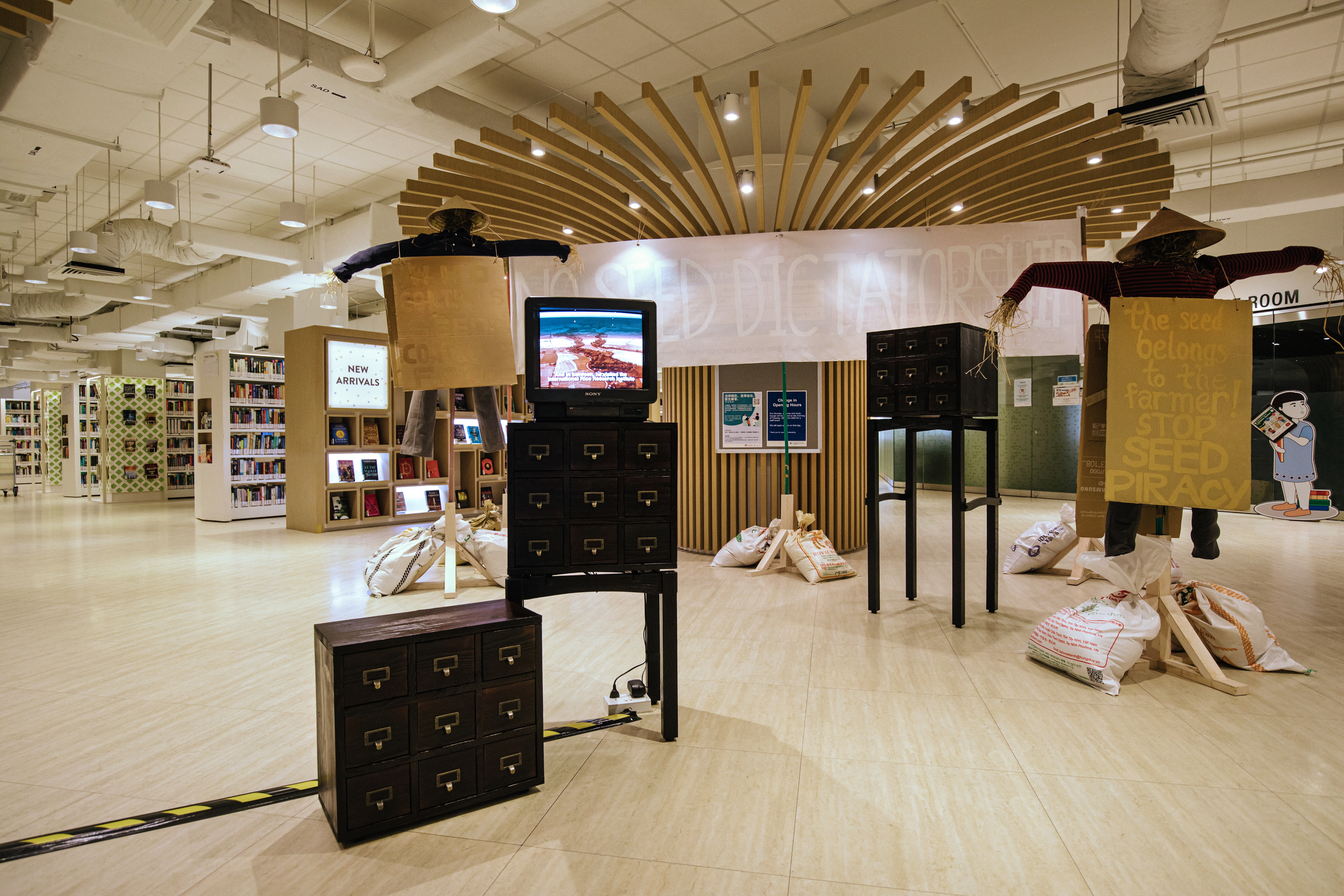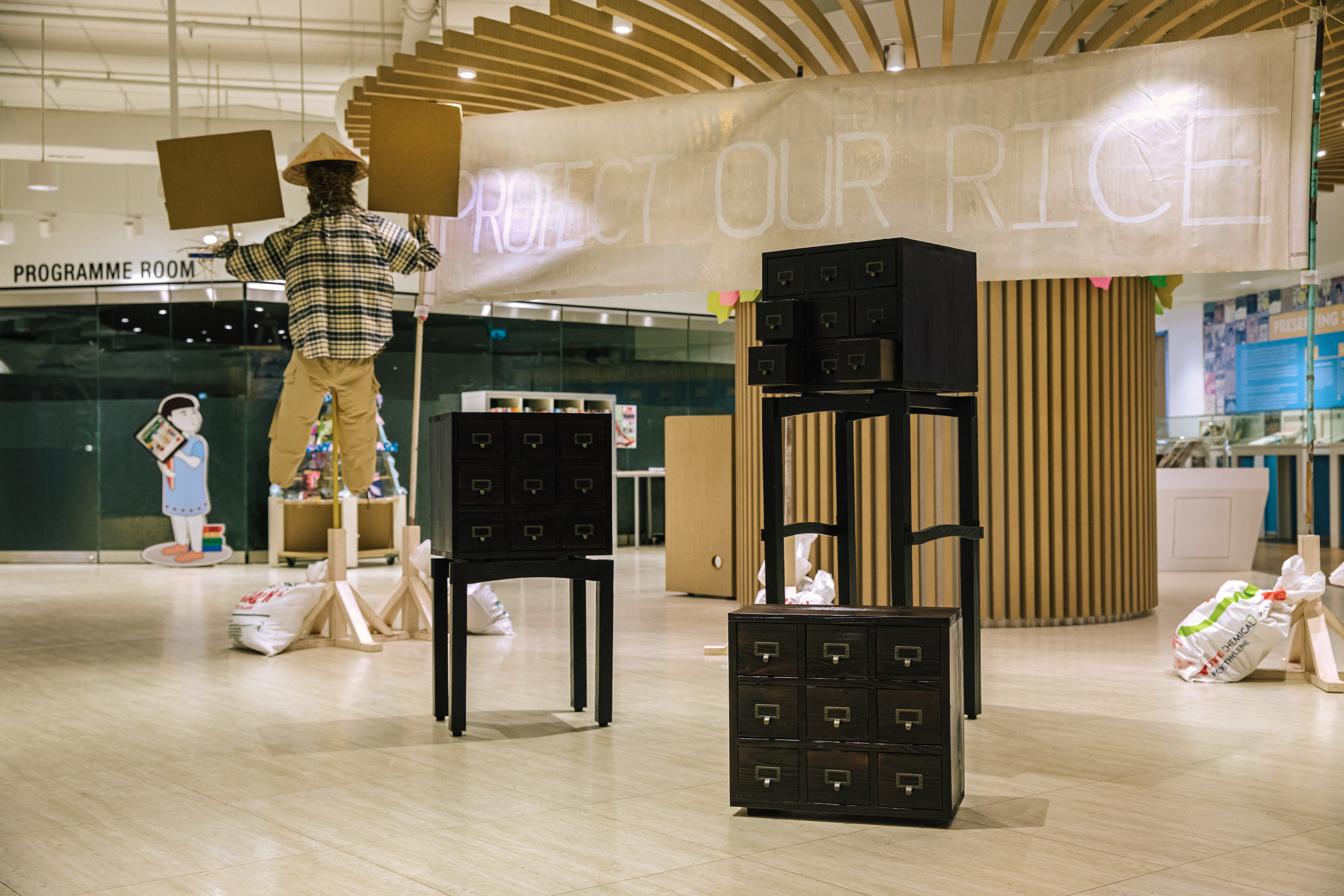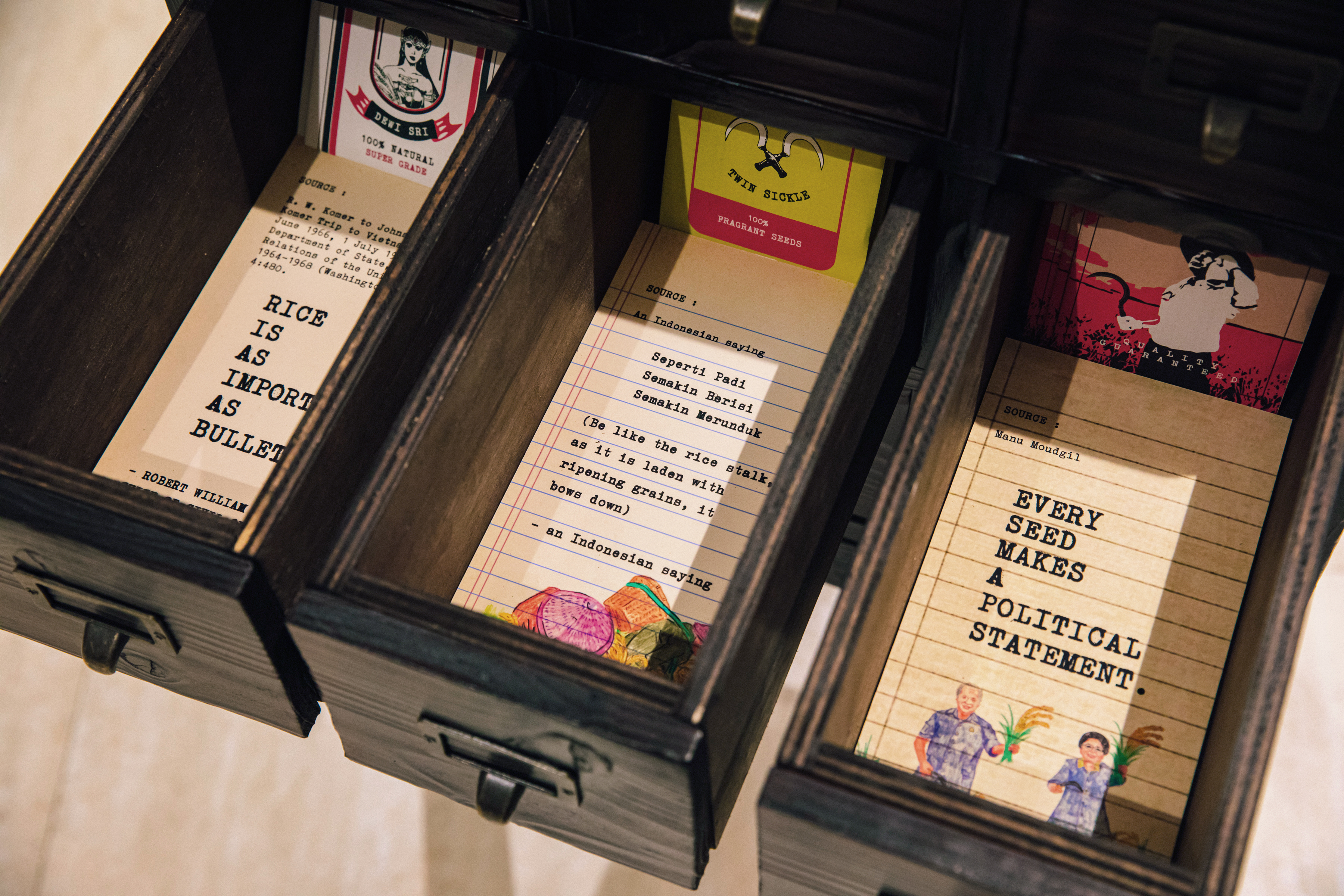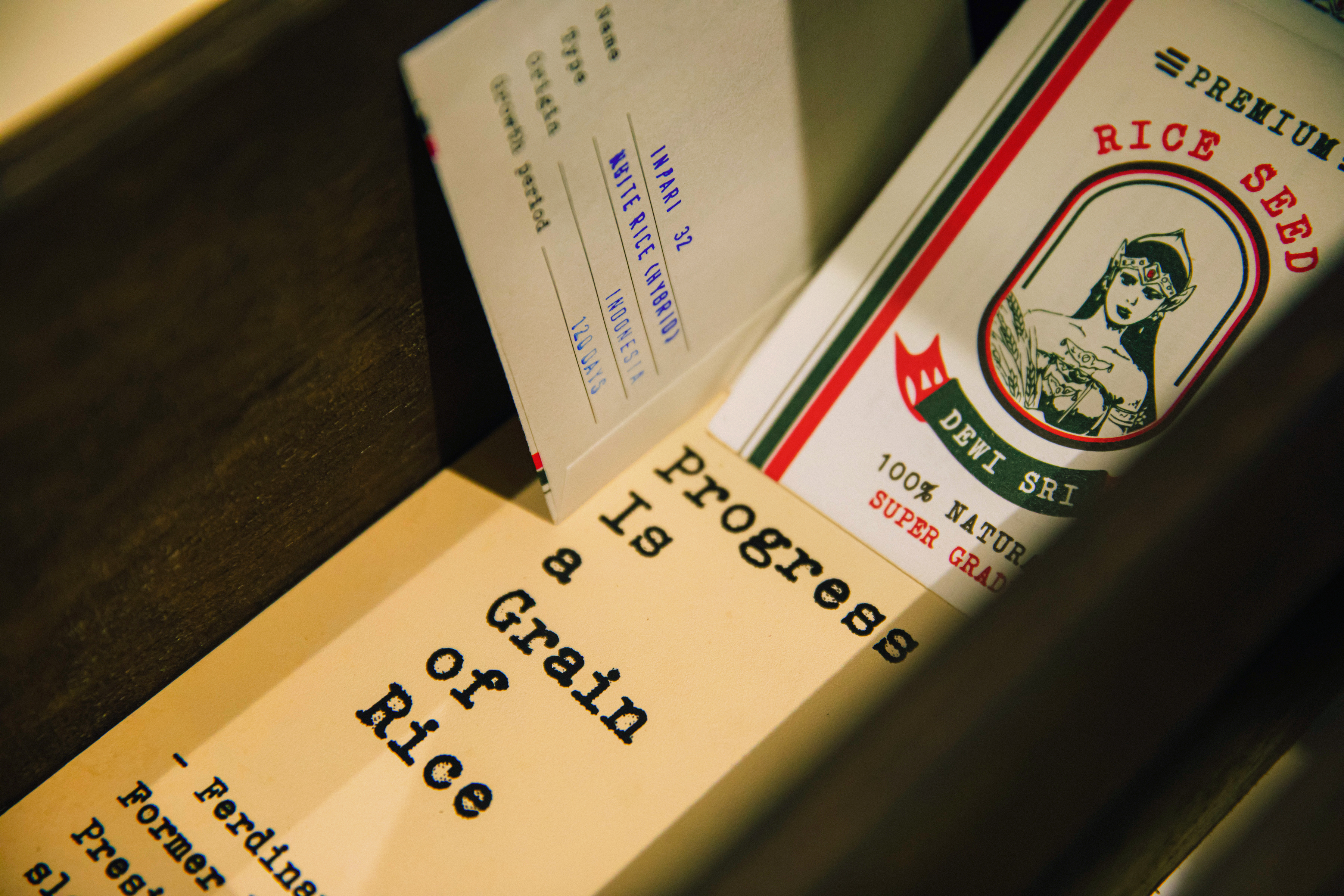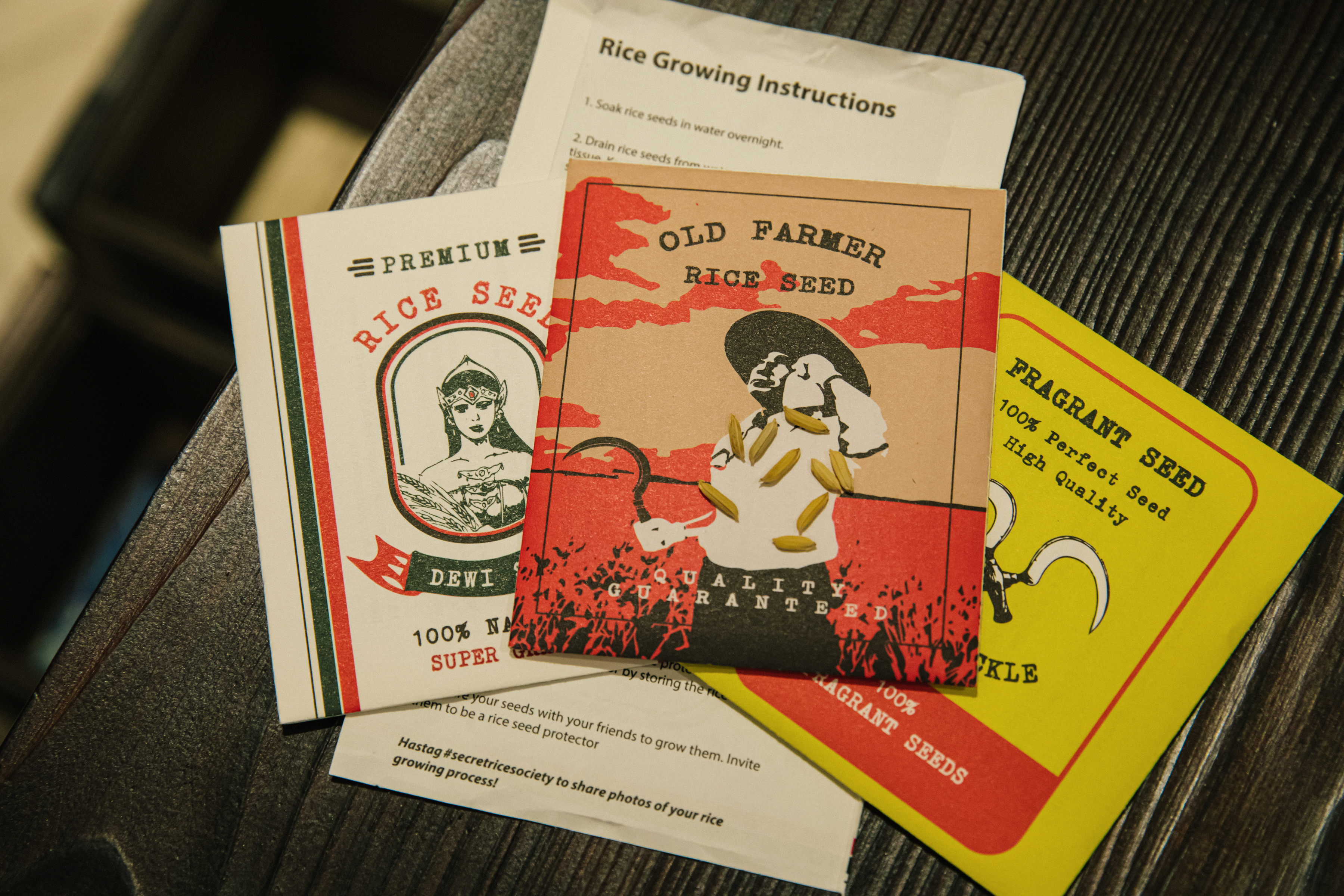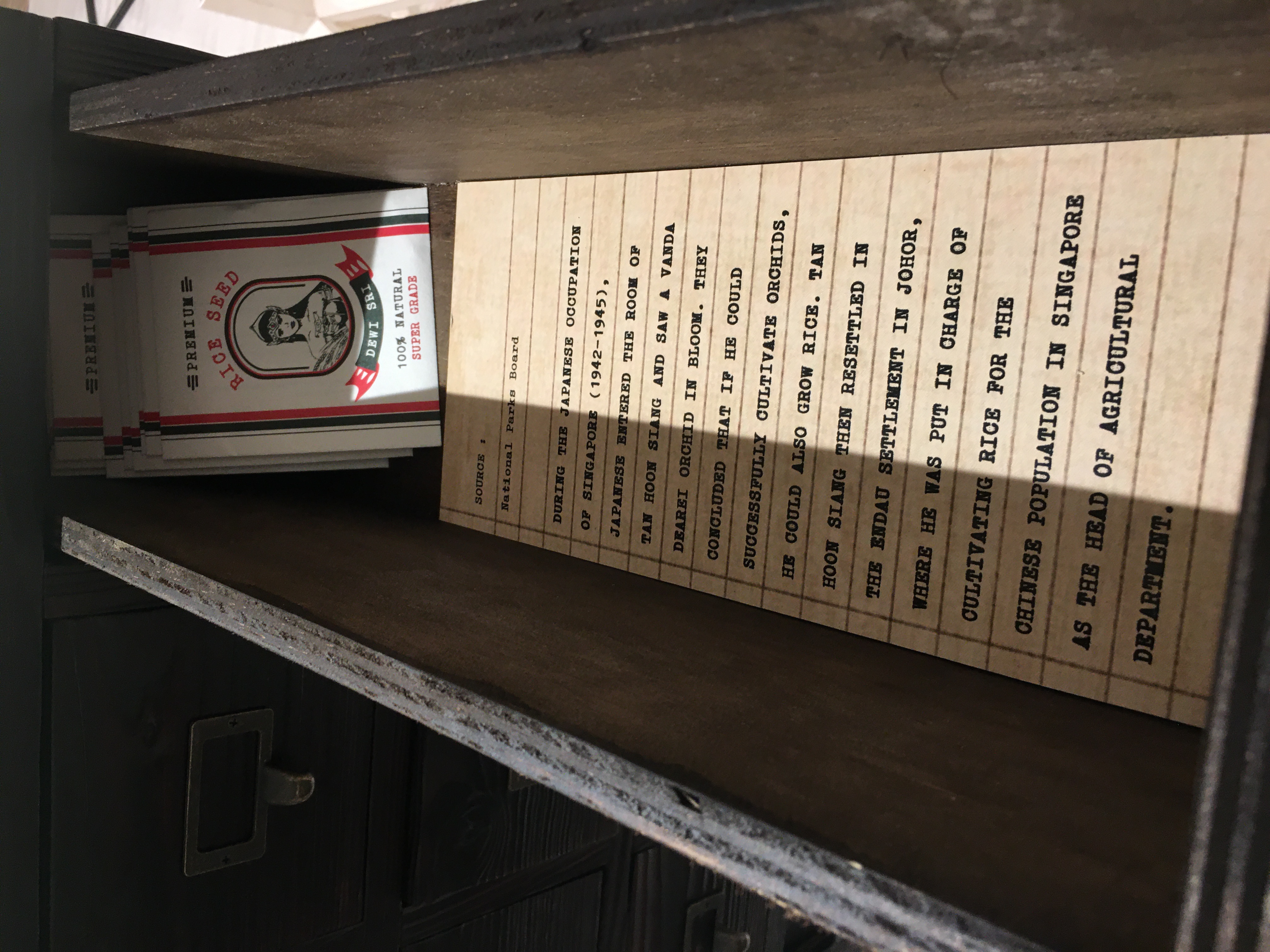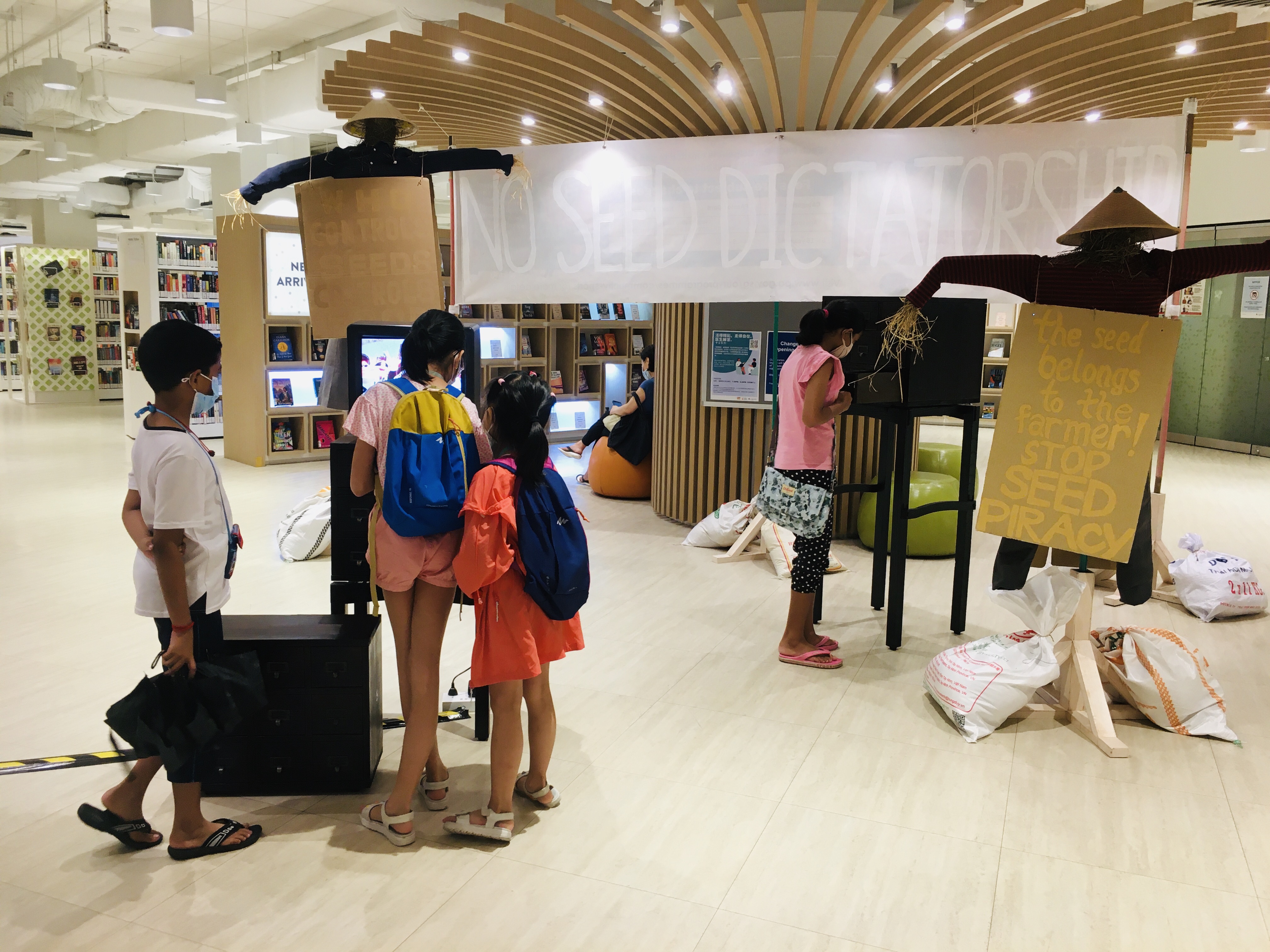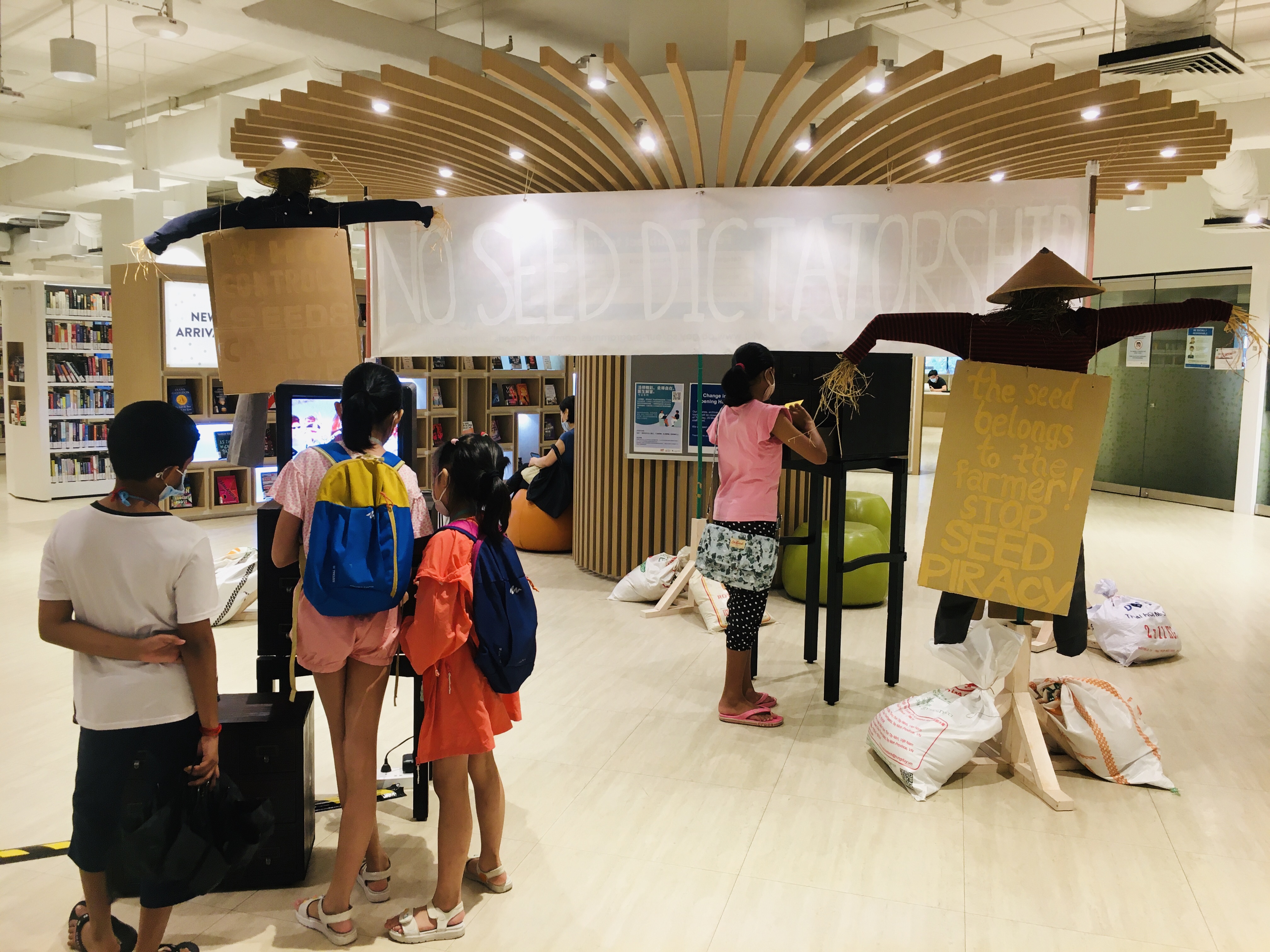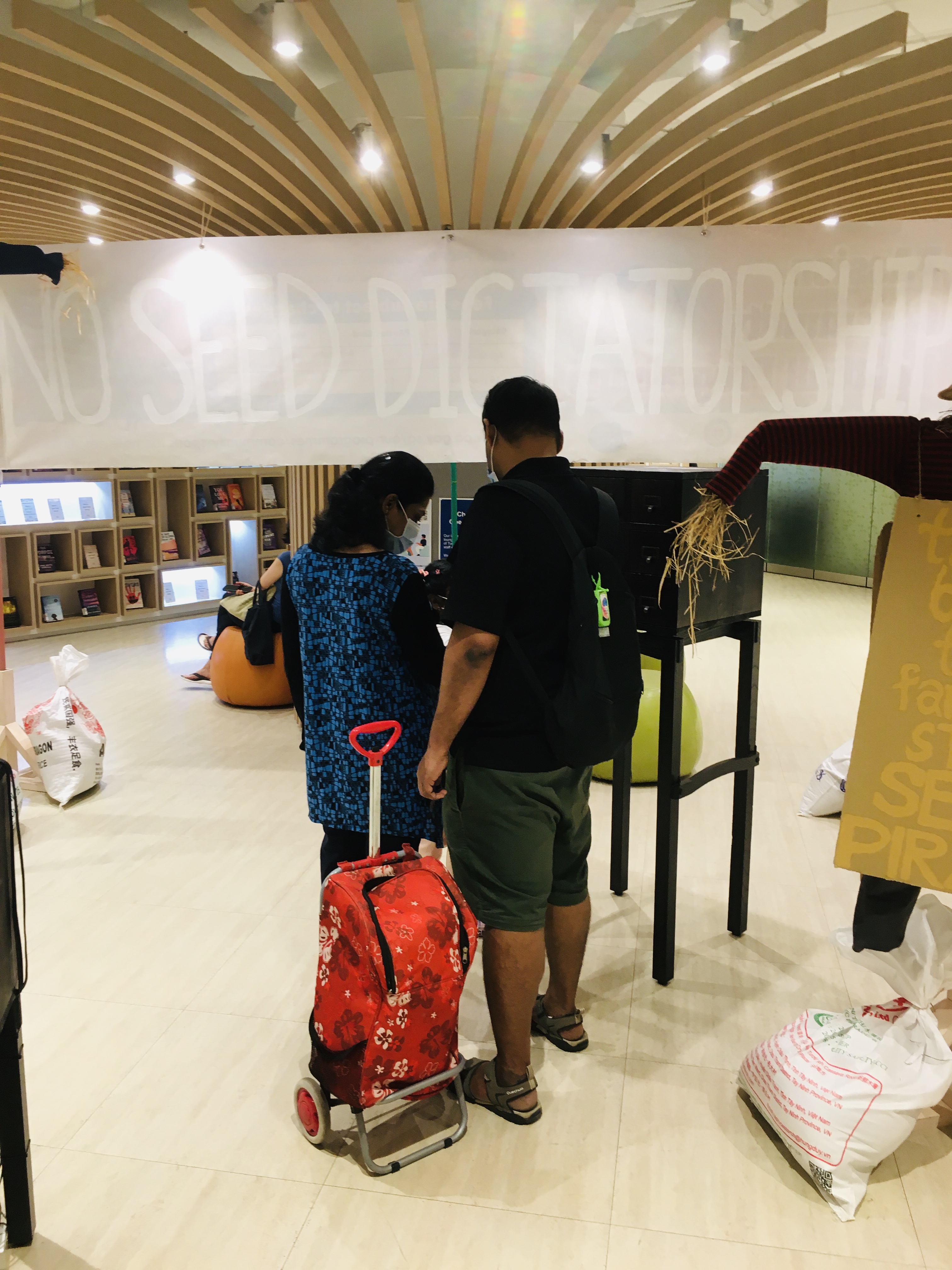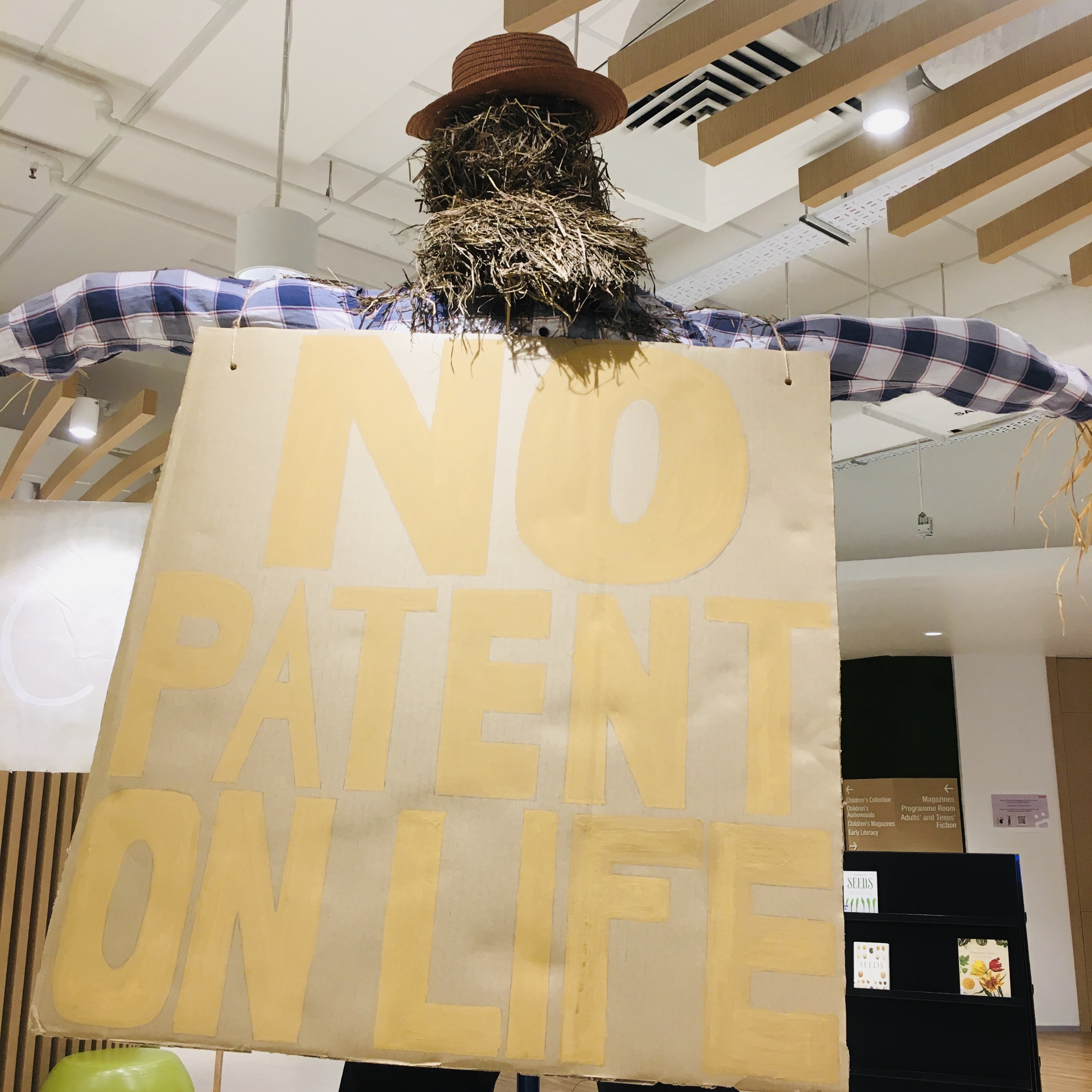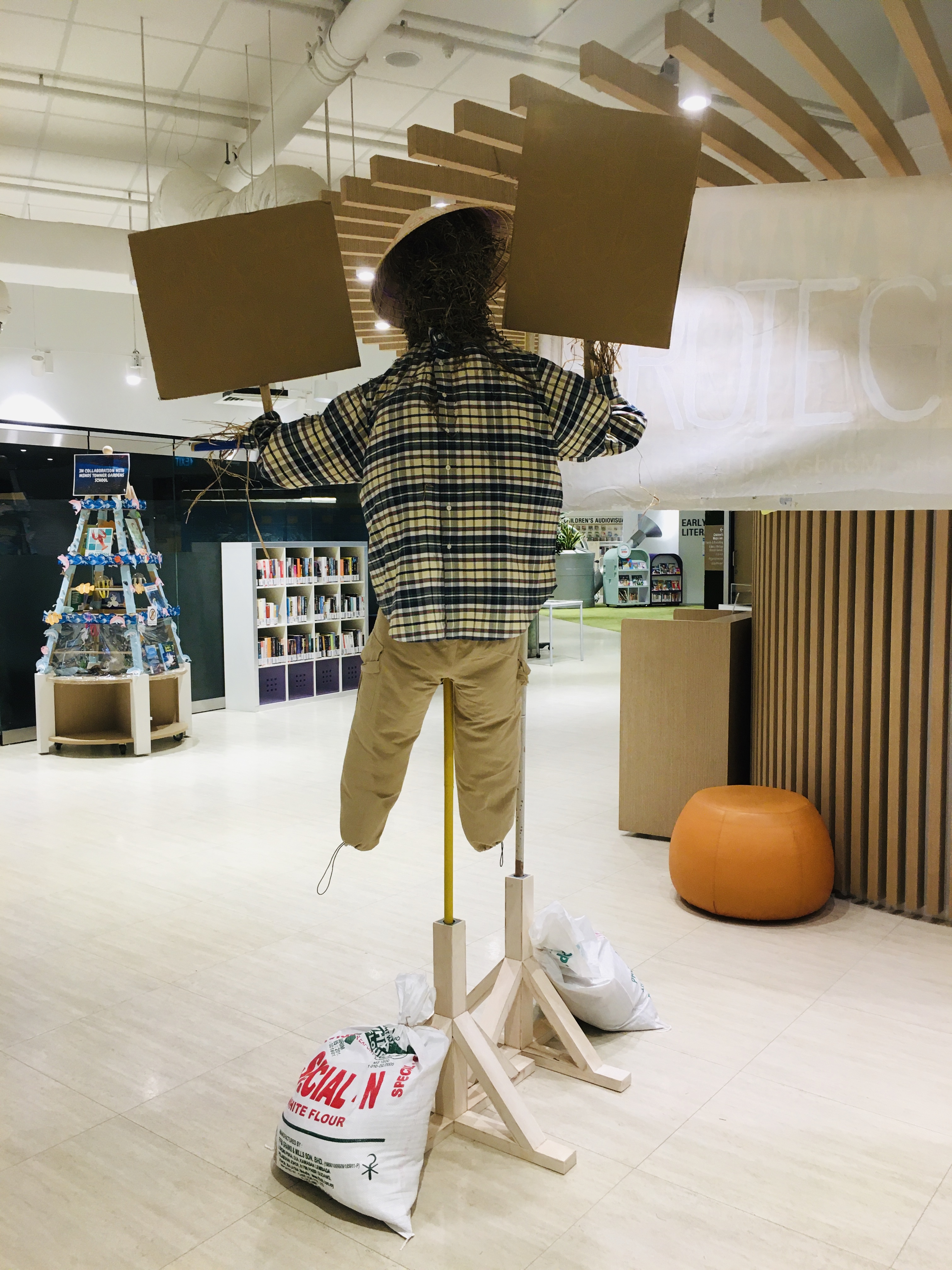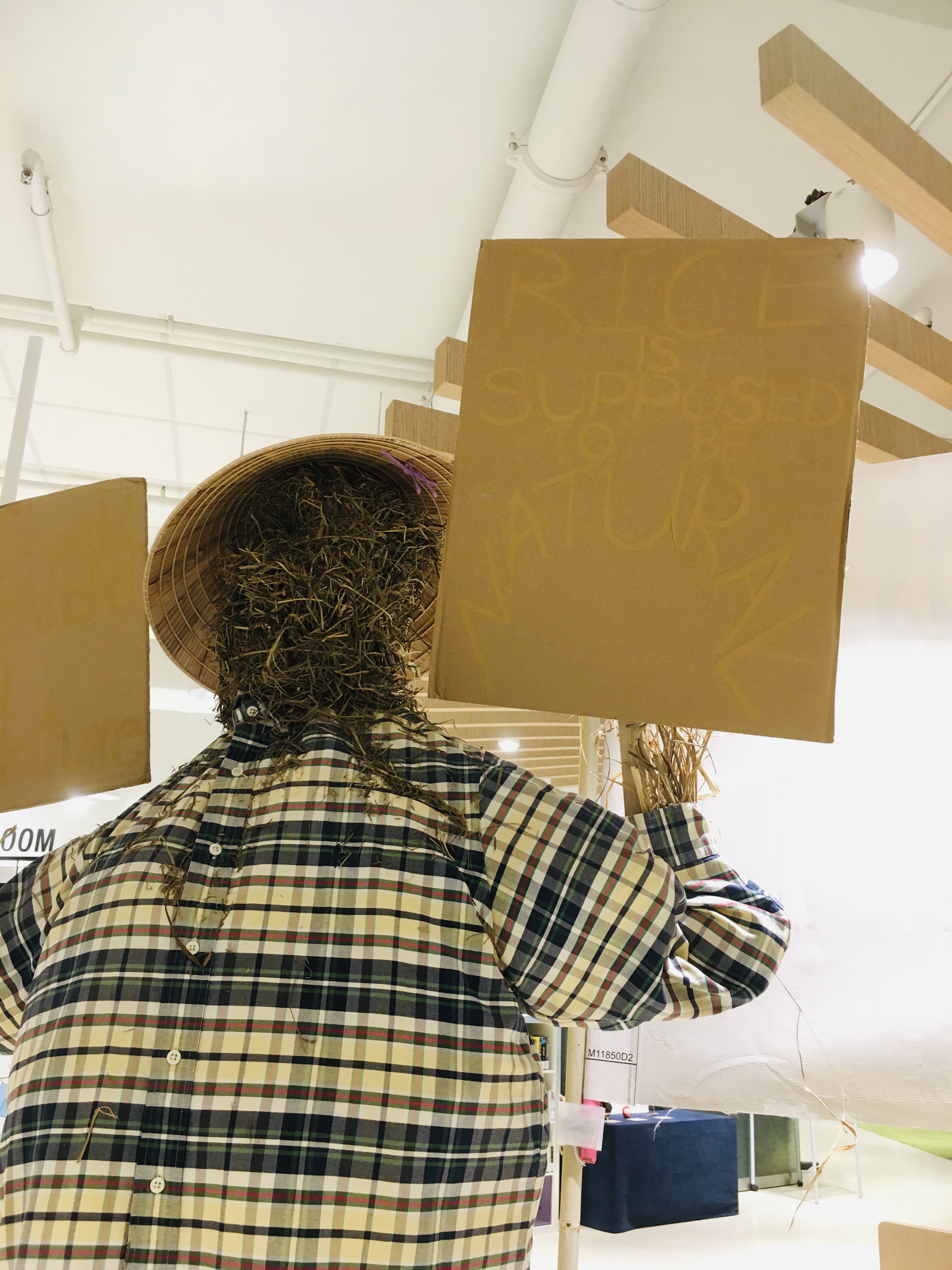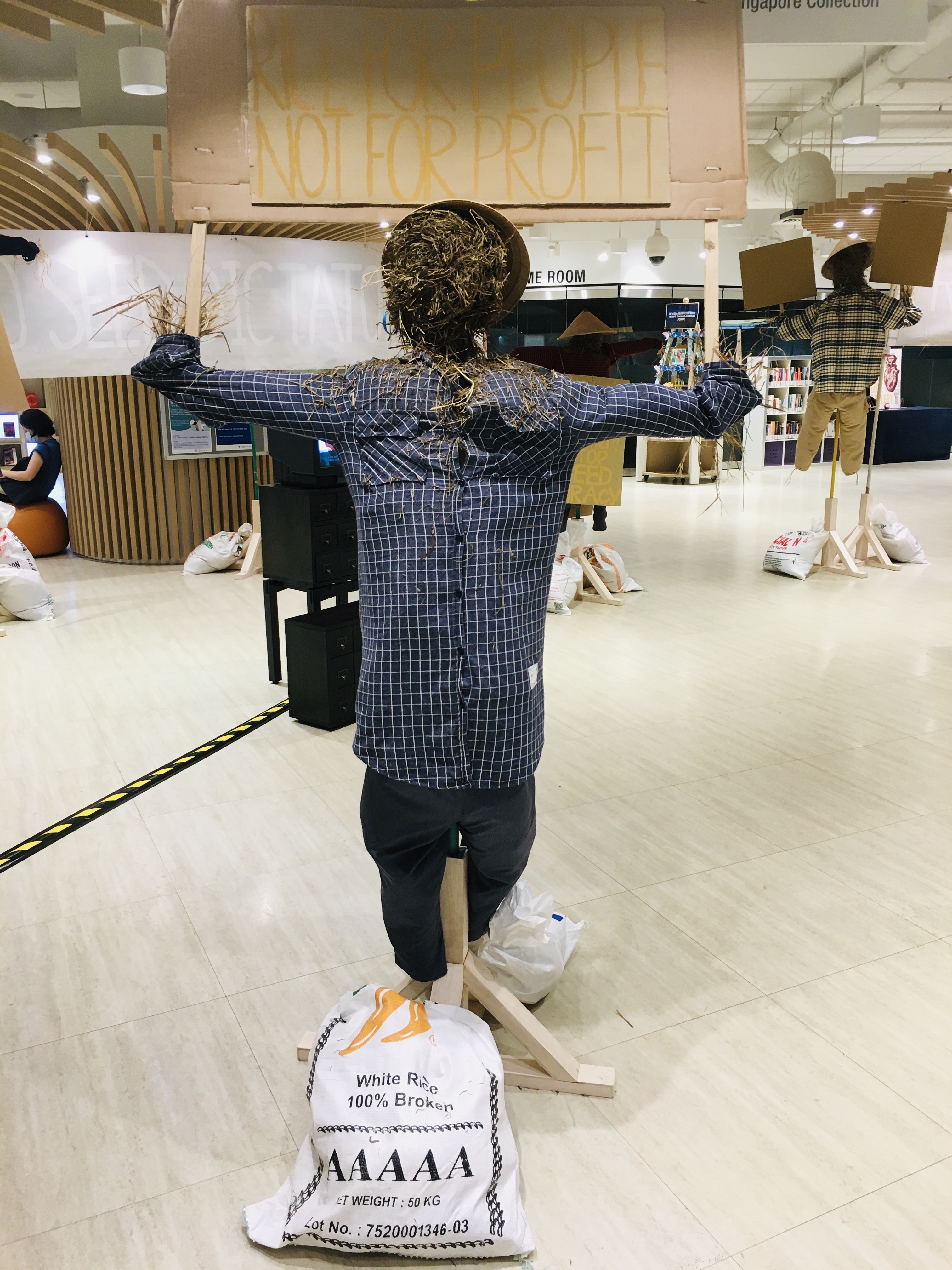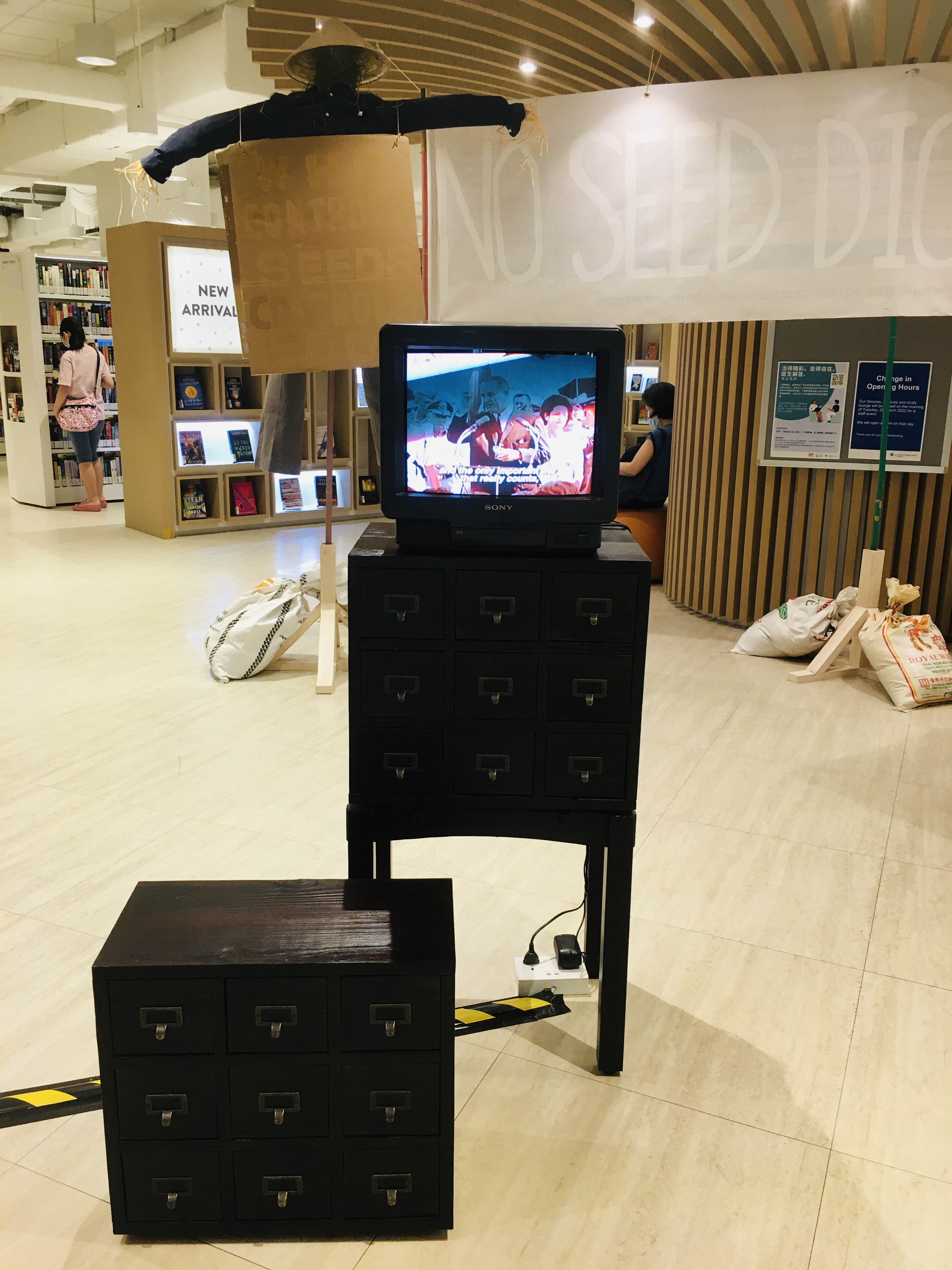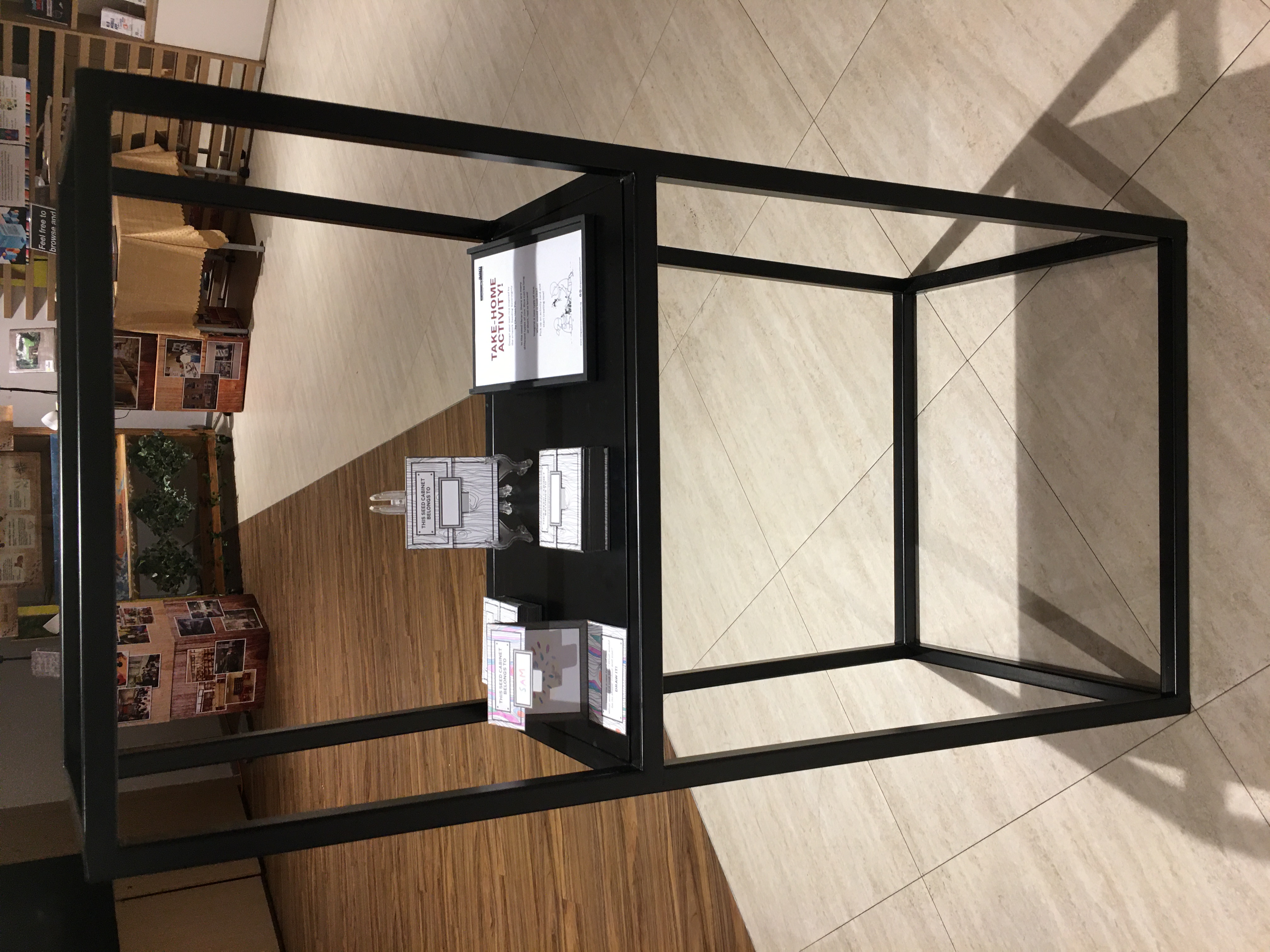Seeding
Sovereignty
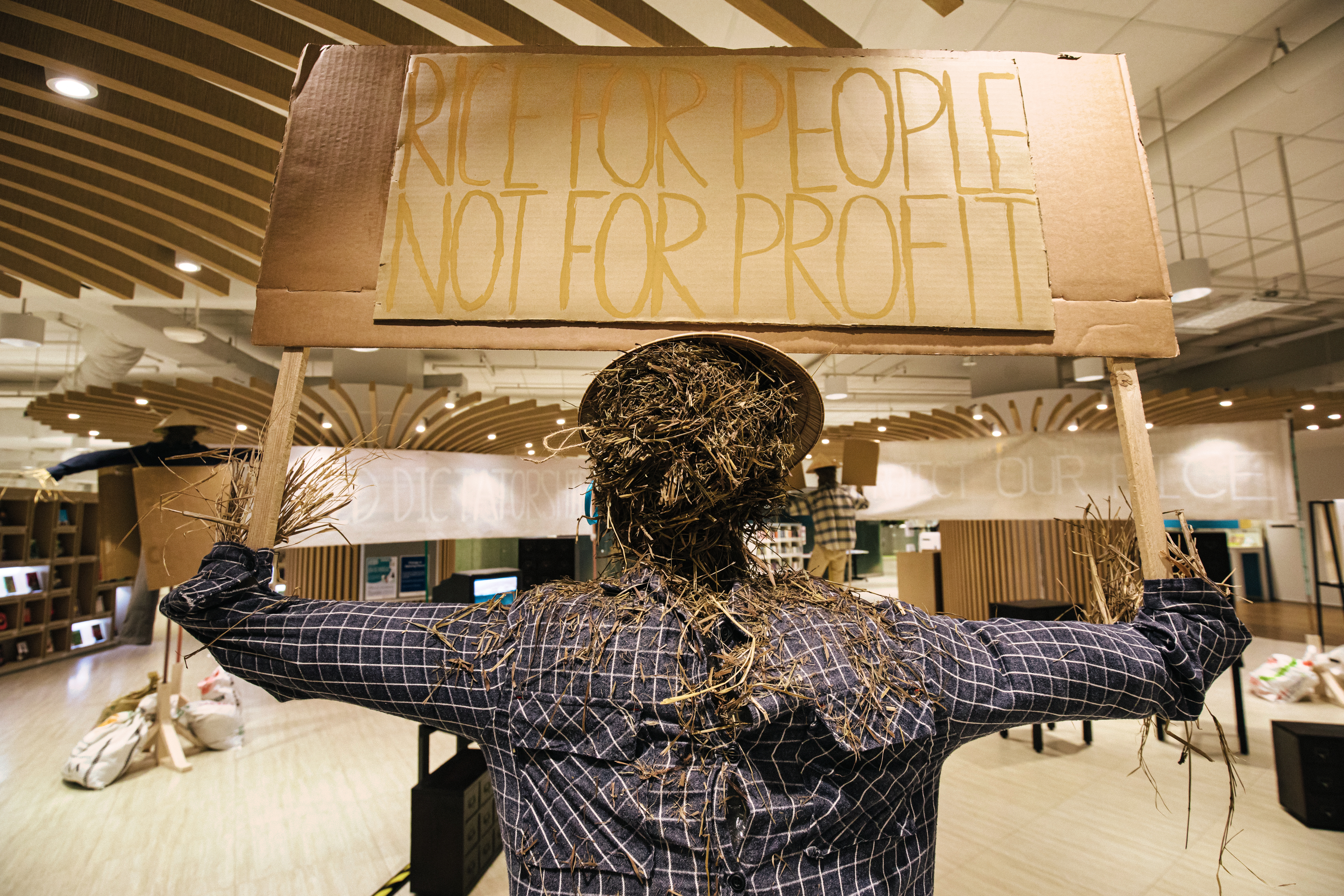
Close up details of Seeding Sovereignty. Images courtesy of Singapore Art Museum
Seeding Sovereignty
Chu Hao Pei
Seeding Sovereignty is an attempt to provide an alternative mode of seed distribution. The work takes the form of a seed library, and is designed to build on shared knowledge, affirm our mutual dependence, and reimagine different ways of organising ourselves. It emerges from my long-term interest in rice and circulation within Singapore and Southeast Asia. As a cumulative index of text, stories and images, the seed library encourages visitors to browse through its drawers and take a packet of rice seeds home with them. The information provided in these drawers are not presented in any strict order, allowing audiences to discover new connections and thoughts about rice and its histories. Seeding Sovereignty invites audiences to reconsider their relationship to the land, the food we eat, and how one humble crop can knit a region together.
Seeding Sovereignty is presented at Lonely Vectors in the Singapore Art Museum from 1–31 Mar 2022 (Bedok Public Library), 2 Apr – 6 Jun 2022 (Ang Mo Kio Public Library), 8 Jun – 24 Jul 2022 (Jurong Regional Library), 27 Jul 2022 – 11 Sept 2022 (Tampines Regional Library).
Lonely Vectors presents a series of artworks and new commissions that draw our attention to the flow of bodies and labour, exclusive zonings, fault lines, choke points, and infrastructural politics that characterise our global economy. The exhibition is presented across multiple venues, including local libraries and public hoardings. The final show will be held at SAM’s current location at Tanjong Pagar Distripark.
Keywords: demand, heirloom seeds, history, hybrid seeds, political tool, spiritual, supply, sovereignty, sufficiency, yield
Chu Hao Pei (b.1990, Singapore) is a visual artist whose works are primarily influenced by his long-standing interest in the interrelations between culture and the environment. Chu’s practice explores the shifting physical, sociological and emotional connections with our natural and urban landscapes. His works shed light on the overlooked and accidental by interweaving the processes of engagement, documentation and research. In this way, he examines the complexities of environmental and cultural loss (or resurgence) shaped by political, economic and social factors. Chu uses certain methods of documentation and representation to reveal aspects of his subject, while simultaneously concealing and drawing attention to what has yet to be communicated or understood.
